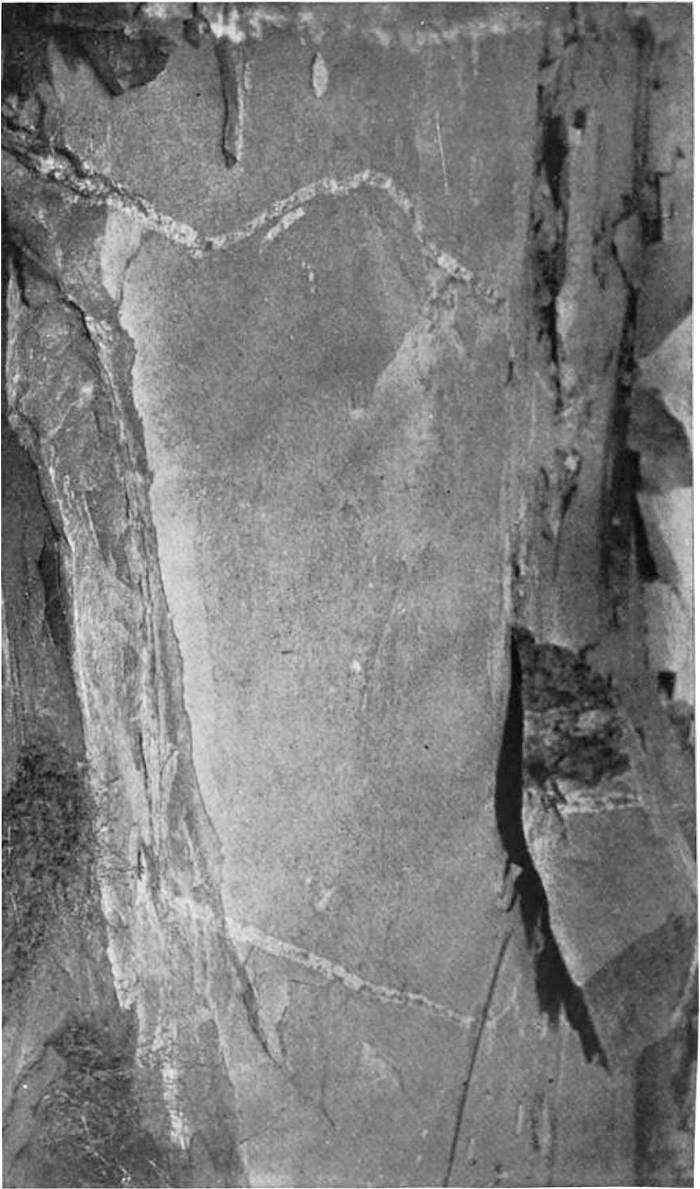but it is badly cut

Plate XXVIII.
Part of the Childs Quarry, near Oglesby, Georgia, showing veins of pegmatite cutting the granite.
(cropped from border and page, but orientation unchanged)
illustrating Thomas L. Watson. A Preliminary Report on a Part of the Granites and Gneisses of Georgia. Geological Survey of Georgia, Bulletin No. 9–A, 1902
Stanford copy, no date of digitization
—
Discussion of the Childs Quarry at pp 220-221. —
“...but it is badly cut by numerous veins composed almost entirely of quartz and feldspar, carrying usually a few large and stout plates of biotite, and, less frequently, of muscovite. The veins vary from a fraction of an inch to many inches in width. They necessarily cause considerable loss in quarrying; and the quarry was said to have been abandoned, on account of their number and extent. However, by the use of discretion and proper working, large dimension stone, of superior quality, can be obtained.”
The geology field books kept by Thomas Leonard Watson during the period 1896-1898 (among them “a field book, July 17-Spetember 20, 1898, containing notes on the granites of Georgia, and including descriptions of many quarries, kept while he was the Assistant State Geologist in Atlanta”) are held at the University of Virginia, Special Collections.
Description here.
—
“The great tables of granite set down in an empty plain were inconceivable without their attendant clouds, which were a part of them, as the smoke is part of the censer, or the foam of the wave.”
ex Willa Cather. Death Comes for the Archbishop (1927)
tags:
or the foam of the wave
Willa Cather; T. L. Watson, A Preliminary Report on a Part of the Granites and Gneisses of Georgia (1902)